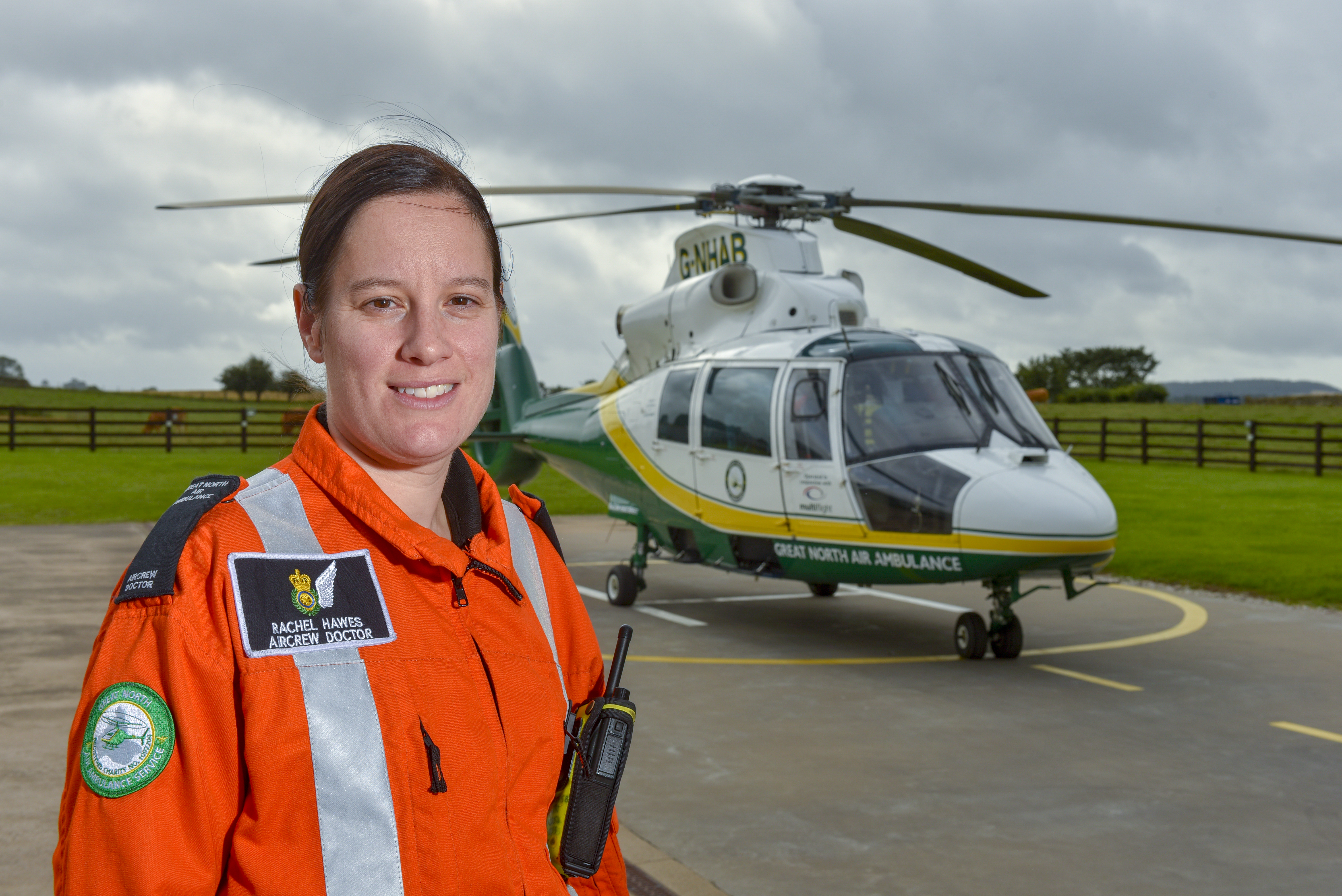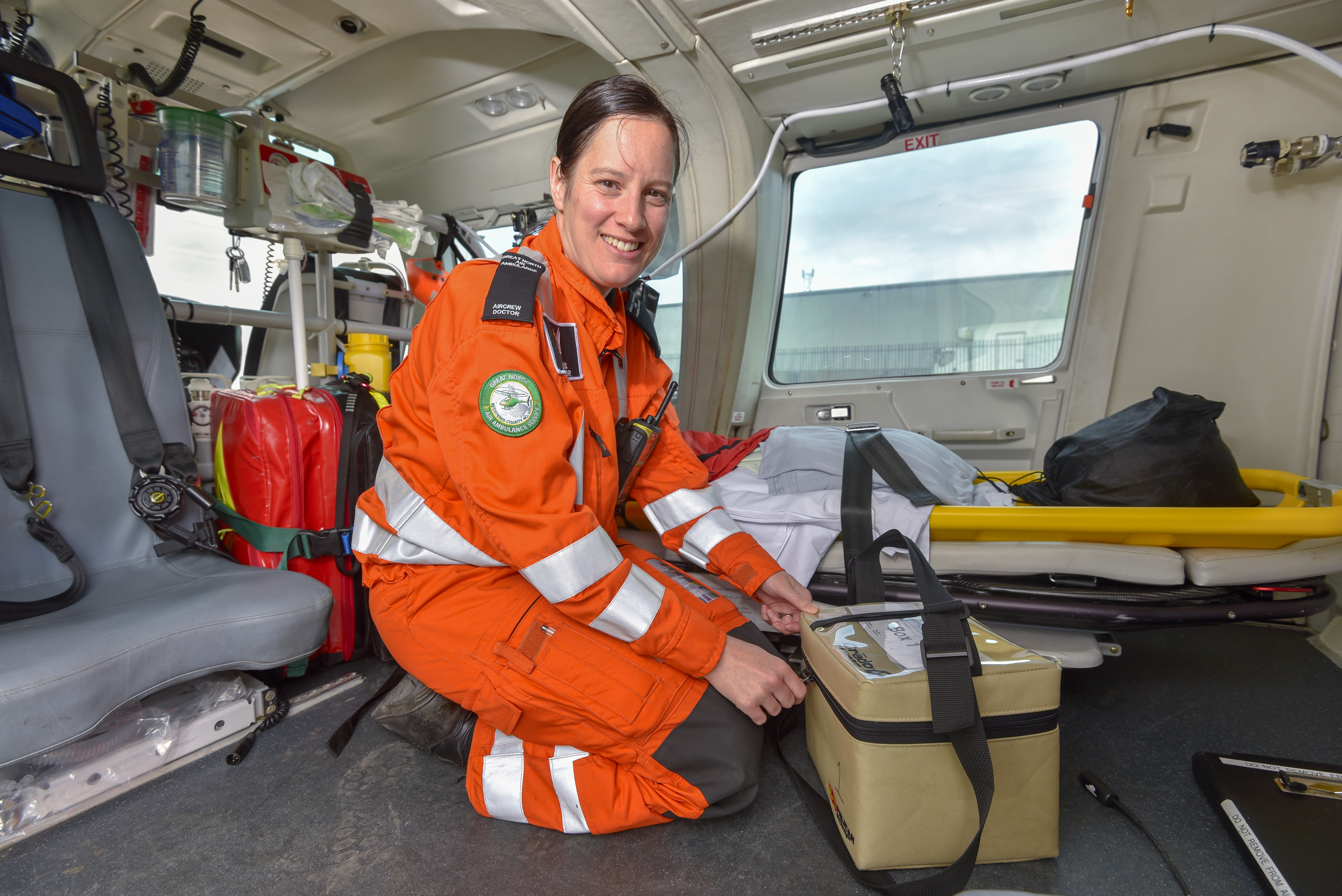Blood on board
Carrying blood and plasma on board their aircraft has transformed how the Great North Air Ambulance Service (GNAAS) cares for accident victims.
The service was one of the first to start carrying blood, back in 2015. We talk to the GNAAS doctor who was behind the move, Dr Rachel Hawes, OBE.

Where did the idea of carrying blood and plasma transfusions on board come from?
Dr Rachel Hawes: I first saw this used during my time in the military in a pre-hospital setting whilst deployed in Afghanistan. I recognised the life-saving benefits of early treatment and realised that this was something that could really benefit the NHS too.
By using balanced ratios of red blood cells and plasma - one unit of blood to one unit of plasma - you can improve the outcome for bleeding patients.
Had this ever been done on an air ambulance before you introduced it?
Red blood cell transfusions had been carried on three other air ambulances when the Great North Air Ambulance Service started using it, but we were the first to carry thawed plasma on board.
What’s the difference between blood and plasma transfusions?
Both red blood cell and plasma transfusions are vitally important. Red blood cells carry oxygen round the body and plasma contains the clotting factors, which are proteins that make a blood clot and can stop bleeding. Together they equate more or less to whole blood. The idea is that if a patient is bleeding and they are losing whole blood, this needs to be replaced with whole blood.
What does carrying blood on board mean for patients?
We’ve now used this on over 300 patients and seen a huge improvement in outcomes, with many patients surviving life-threatening injuries who might have died without this treatment.
The patients are also much more likely to have normal blood clotting when they arrive at hospital, which helps to stop the bleeding earlier.

What has the impact been on the level of care offered by the charity?
These new services have meant that rather than patients waiting to arrive in hospital to get the urgent care that they need, it starts on the roadside.
This level of care then continues until they arrive at hospital, and many of the patients who would have otherwise died at the roadside are now surviving the journey to hospital and going on to live their lives.
What type of blood is transfused and why?
We carry O negative blood as it’s considered to be the ‘universal donor’ and can be given to a patient in an emergency before we know their blood group. We carry A positive or AB positive plasma as this is similarly considered the safest to give in an emergency.
Finally, how did you feel, getting an OBE?
It was such a shock but a total honour to be recognised for the work that we have done, which of course wouldn’t have been possible without the whole team.
It’s been so satisfying to have an idea that may help save lives get established into NHS practice, especially in a financially constrained environment. To then see it being used on patients and improve outcomes is just so rewarding – for me and the whole team.

